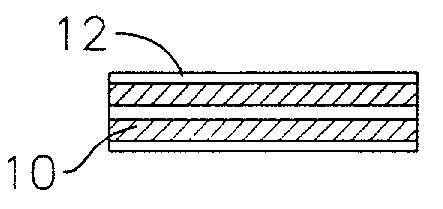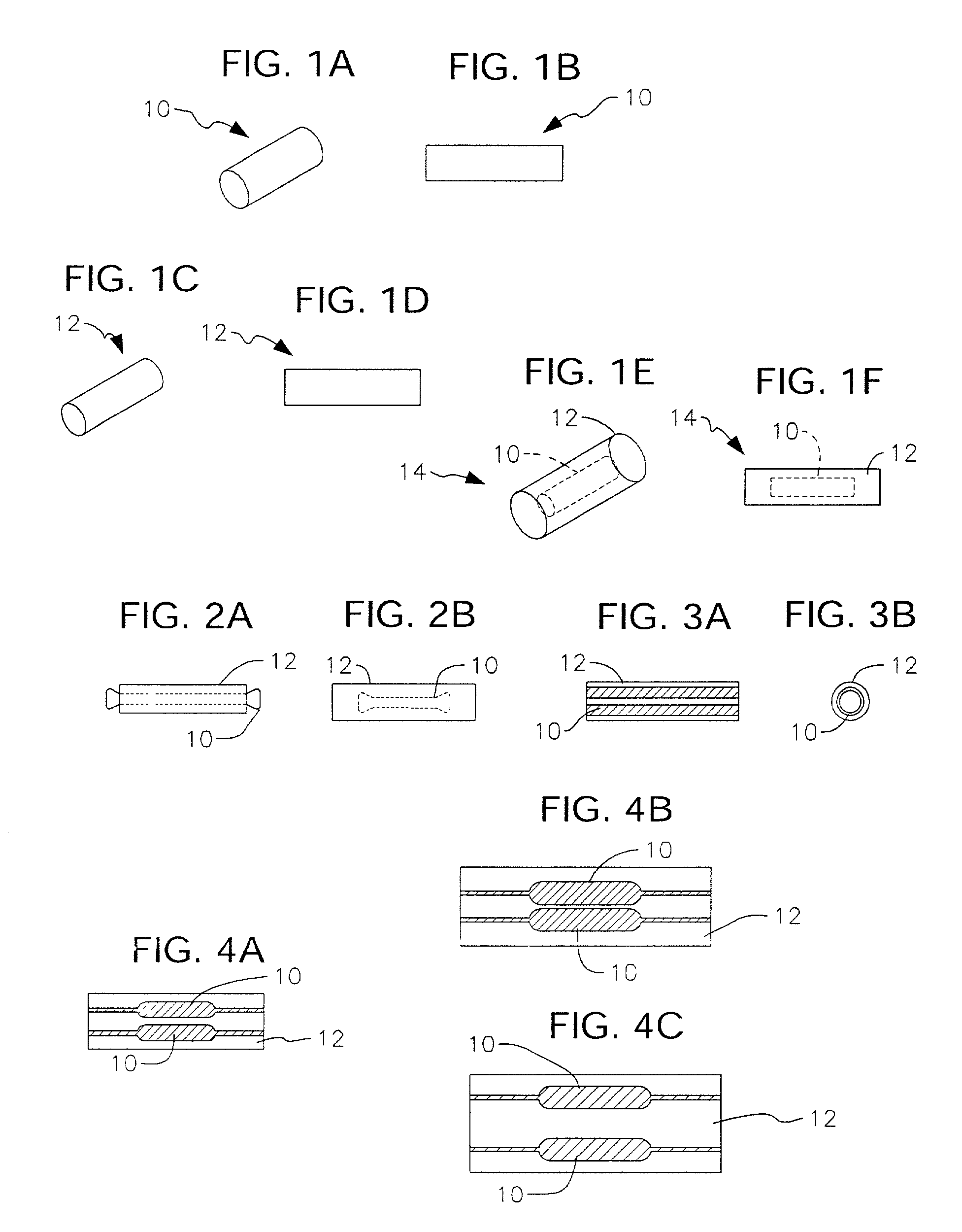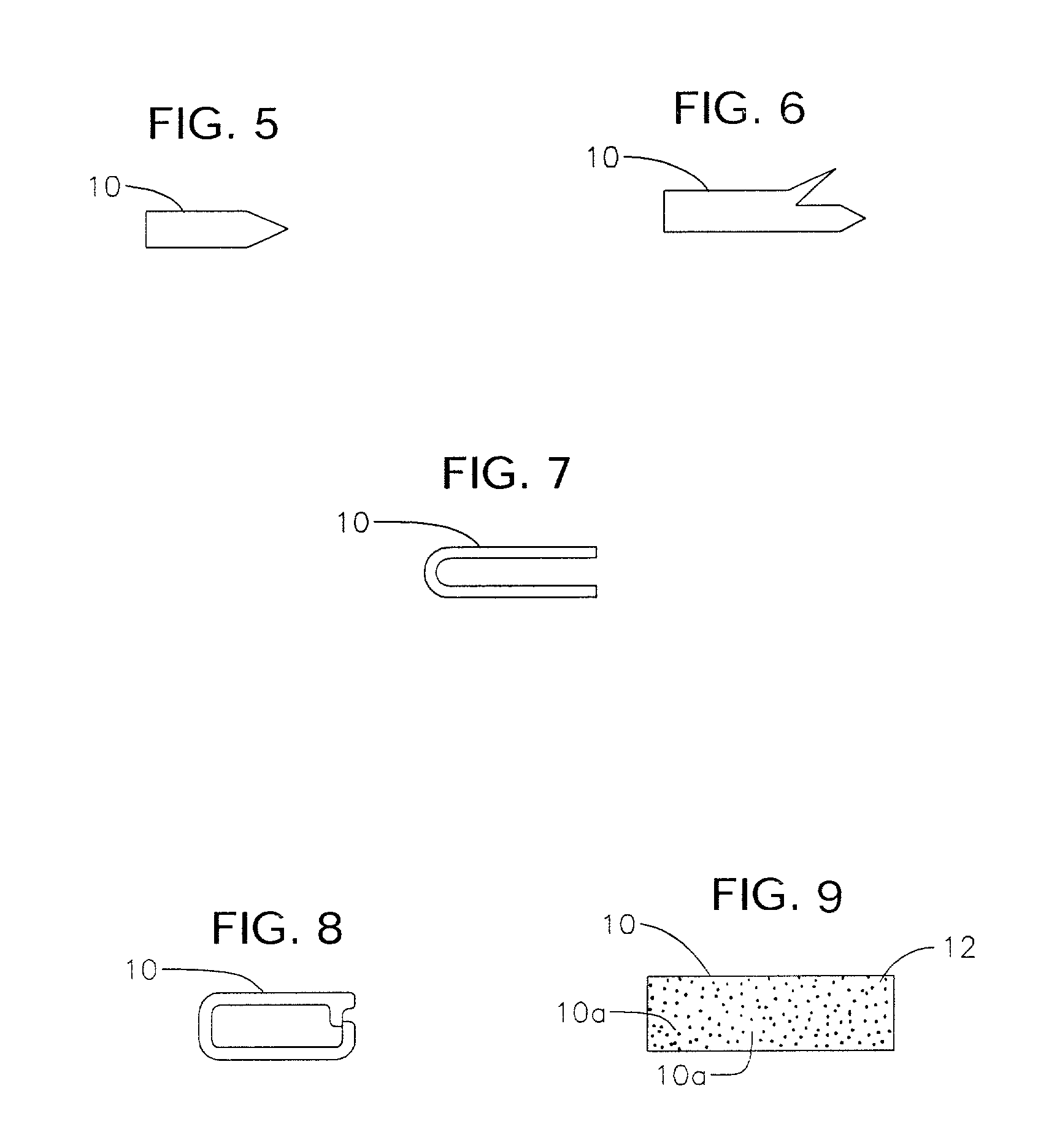Biodegradable polymer for marking tissue and sealing tracts
a biodegradable, tissue marker technology, applied in the field of biodegradable tissue markers and sealants, can solve the problems of difficult to anchor tissue markers against migration, unknown how to use tissue markers or sealants as drug delivery means, and inability to formulate polymers having utility as tissue markers, etc., to achieve slow drug release, increase flexibility, and modulus of elasticity
- Summary
- Abstract
- Description
- Claims
- Application Information
AI Technical Summary
Benefits of technology
Problems solved by technology
Method used
Image
Examples
Embodiment Construction
[0083]How to achieve non-covalent bonding of ionic and non-ionic contrast agent with polymers such as PGA / PLA / PCL / PDO will now be described. Different techniques are employed to accomplish similar results in connection with covalent bonding.
[0084]The starting materials employed in this invention for synthesizing the novel tissue marker include poly(DL-lactide), inherent viscosity (IV) of 0.63 dL / g (where the solvent is CHCl3 and the concentration is approximately 0.5 g / dL at 30° C.), 50 / 50 poly(DL-lactide-co-glycolide, IV of 0.17 dL / g (hexafluoroisopropanol, concentration ˜0.5 g / dL at 30° C.) and 75 / 25 poly(DL-lactide-co-glycolides), having IVs of 0.44 dL / g (CHCl3, concentration ˜0.5 g / dL at 30° C.) and 0.69 dL / g (CHCl3, concentration ˜0.5 g / dL 30° C.). These materials are commercially available from Birmingham Polymers, Inc., of Birmingham, Ala.
[0085]Further starting materials for synthesis of the novel tissue marker include poly (DL-lactide), IV of 1.6 dL / g (CHCl3, concentration 0...
PUM
 Login to View More
Login to View More Abstract
Description
Claims
Application Information
 Login to View More
Login to View More - R&D
- Intellectual Property
- Life Sciences
- Materials
- Tech Scout
- Unparalleled Data Quality
- Higher Quality Content
- 60% Fewer Hallucinations
Browse by: Latest US Patents, China's latest patents, Technical Efficacy Thesaurus, Application Domain, Technology Topic, Popular Technical Reports.
© 2025 PatSnap. All rights reserved.Legal|Privacy policy|Modern Slavery Act Transparency Statement|Sitemap|About US| Contact US: help@patsnap.com



